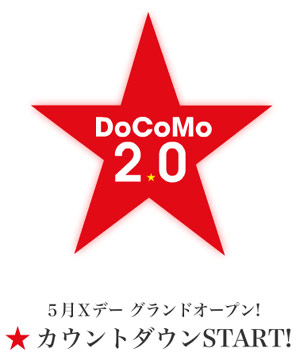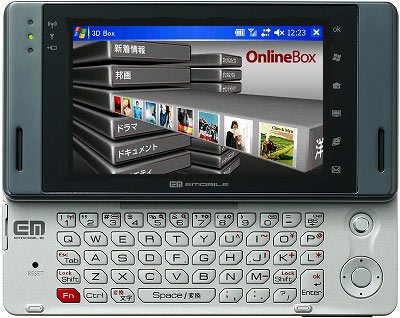DoCoMo 2.0 — Message Lost in Translation?
 On Monday 23 April NTT DoCoMo unveiled their latest 3G handsets, the 904i-series, at a press conference held here in downtown Tokyo.
On Monday 23 April NTT DoCoMo unveiled their latest 3G handsets, the 904i-series, at a press conference held here in downtown Tokyo.
WWJ pointed to this webcast of their presentation, which clearly stated from the very beginning the new “DoCoMo 2.0” campaign theme.
We shouldn’t really be surprised that the main message, from Japan’s dominant mobile operator, contained in the announcement somehow managed to get 2.0 attention from the mainstream media. With few exceptions, the entire tech web focused on the motion-sensor for gaming application. Few if any noted how ironic it was that while the company insisted it was going to “focus on offering unique applications and services that will be difficult for the competition to duplicate” they were in fact introducing a functionality which was originally made available in Japan [video here] by Vodafone and Sharp over two years ago.
Perhaps the gritty details — such as the fact that all five new models will (of course) ship pre-installed with the Osaifu-Keitai FeliCa mobile wallet together with related security services — are less appealing to the overseas media than Nokia’s recent announcement that they, too, have the mobile wallet urge?
To be sure, there were a few interesting new offerings in Natsuno-san’s presentation, such as the 2-in-1 dual-identity option and flat-rate access to Napster’s full music library service. However, one of the main observations we take away from this news is that the rest of the world still tends to focus only on the most quirky headlines (wait until the MSM find out about this one). WWJ subscribers login for our thoughts on this latest development.


 With the flurry of activity around here lately we are somewhat behind on rolling out this quick video clip shot at SoftBank Mobile’s new Flagship store in Harajuku. Wisely located in Tokyo’s mobile youth grand central, and mere blocks away from KDDI’s
With the flurry of activity around here lately we are somewhat behind on rolling out this quick video clip shot at SoftBank Mobile’s new Flagship store in Harajuku. Wisely located in Tokyo’s mobile youth grand central, and mere blocks away from KDDI’s  eMobile announced their debut package offering – complete with terminals, data cards and flat-rate HSDPA price plan – today at a Tokyo press conference with company representatives joined by notable industry partners including Paul Jacobs, CEO of Qualcomm, Darren Huston, CEO of Microsoft Japan, and Masafumi Matsumoto, representative director from Sharp. The upstart carrier’s founder, chairman and CEO, Sachio Semmoto (who was co-founder of DDI, which became KDDI), called their newly introduced Sharp EM-One smartphone, “the next-generation mobile broadband device” – which was “designed to deliver always-on broadband at a reasonable monthly flat-rate price.”
eMobile announced their debut package offering – complete with terminals, data cards and flat-rate HSDPA price plan – today at a Tokyo press conference with company representatives joined by notable industry partners including Paul Jacobs, CEO of Qualcomm, Darren Huston, CEO of Microsoft Japan, and Masafumi Matsumoto, representative director from Sharp. The upstart carrier’s founder, chairman and CEO, Sachio Semmoto (who was co-founder of DDI, which became KDDI), called their newly introduced Sharp EM-One smartphone, “the next-generation mobile broadband device” – which was “designed to deliver always-on broadband at a reasonable monthly flat-rate price.”